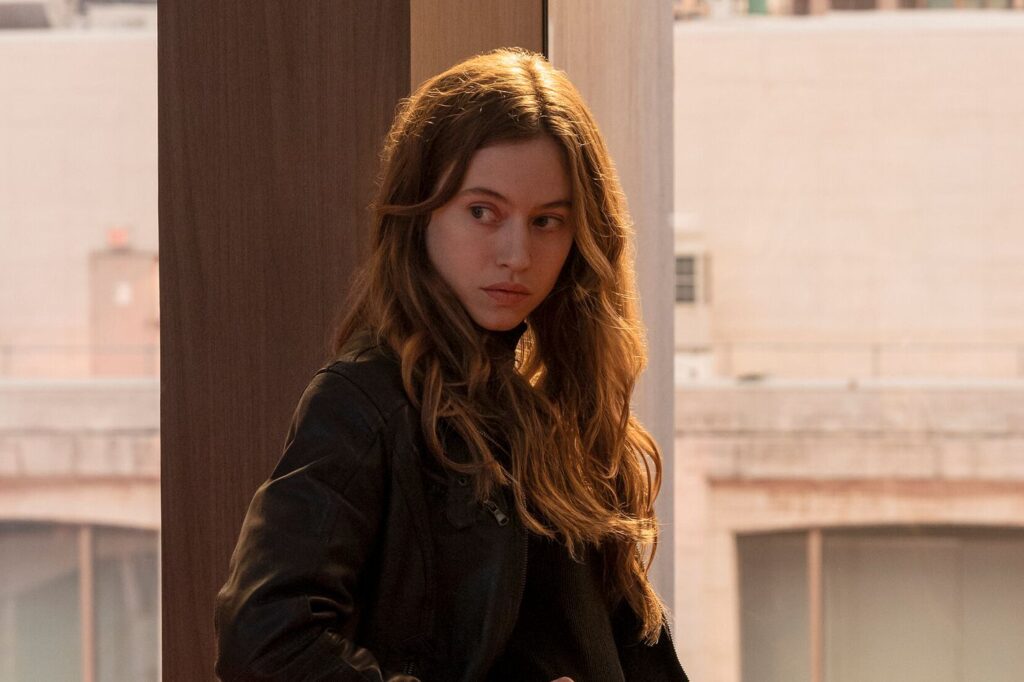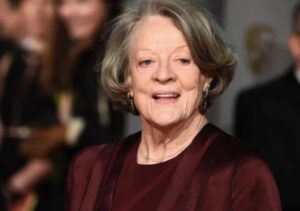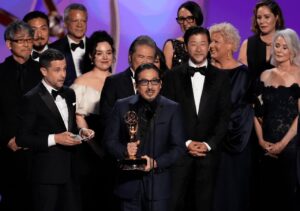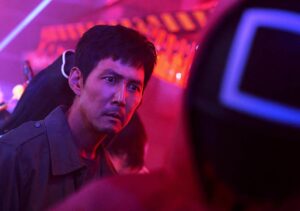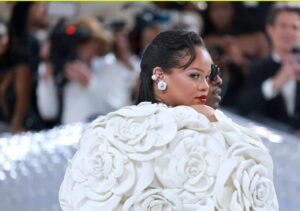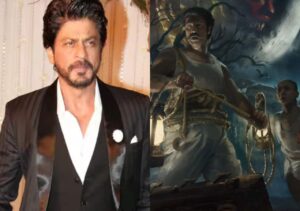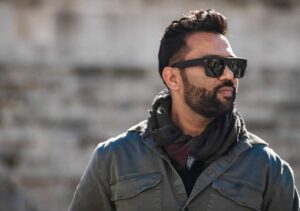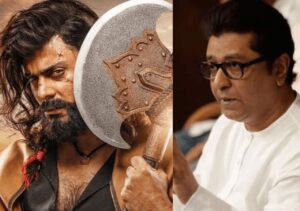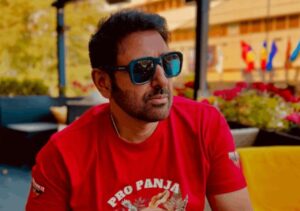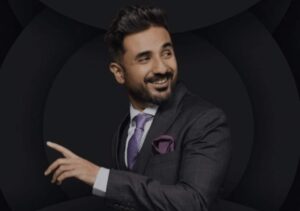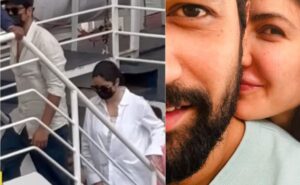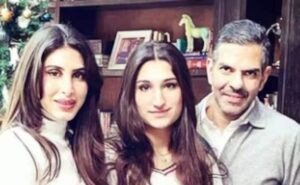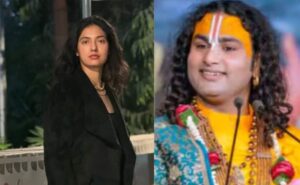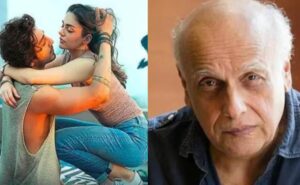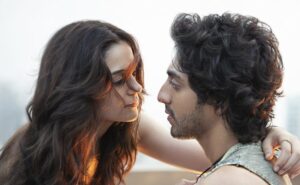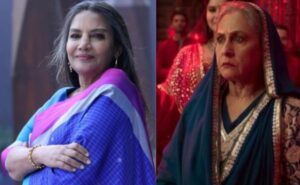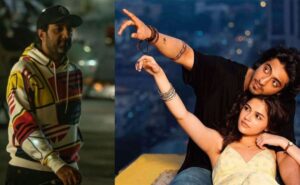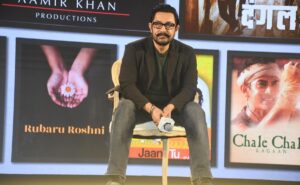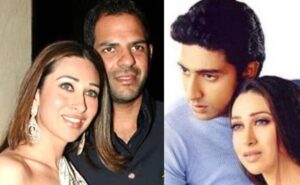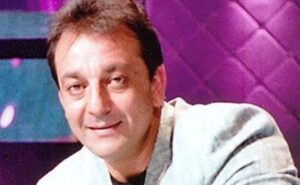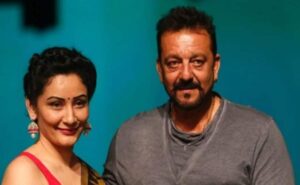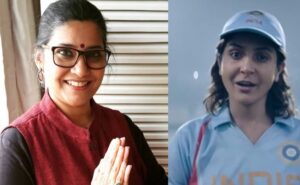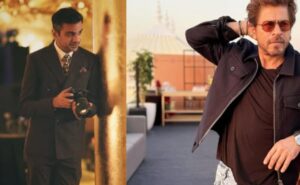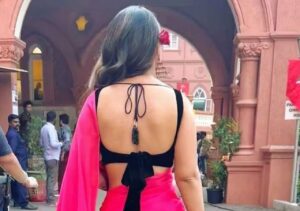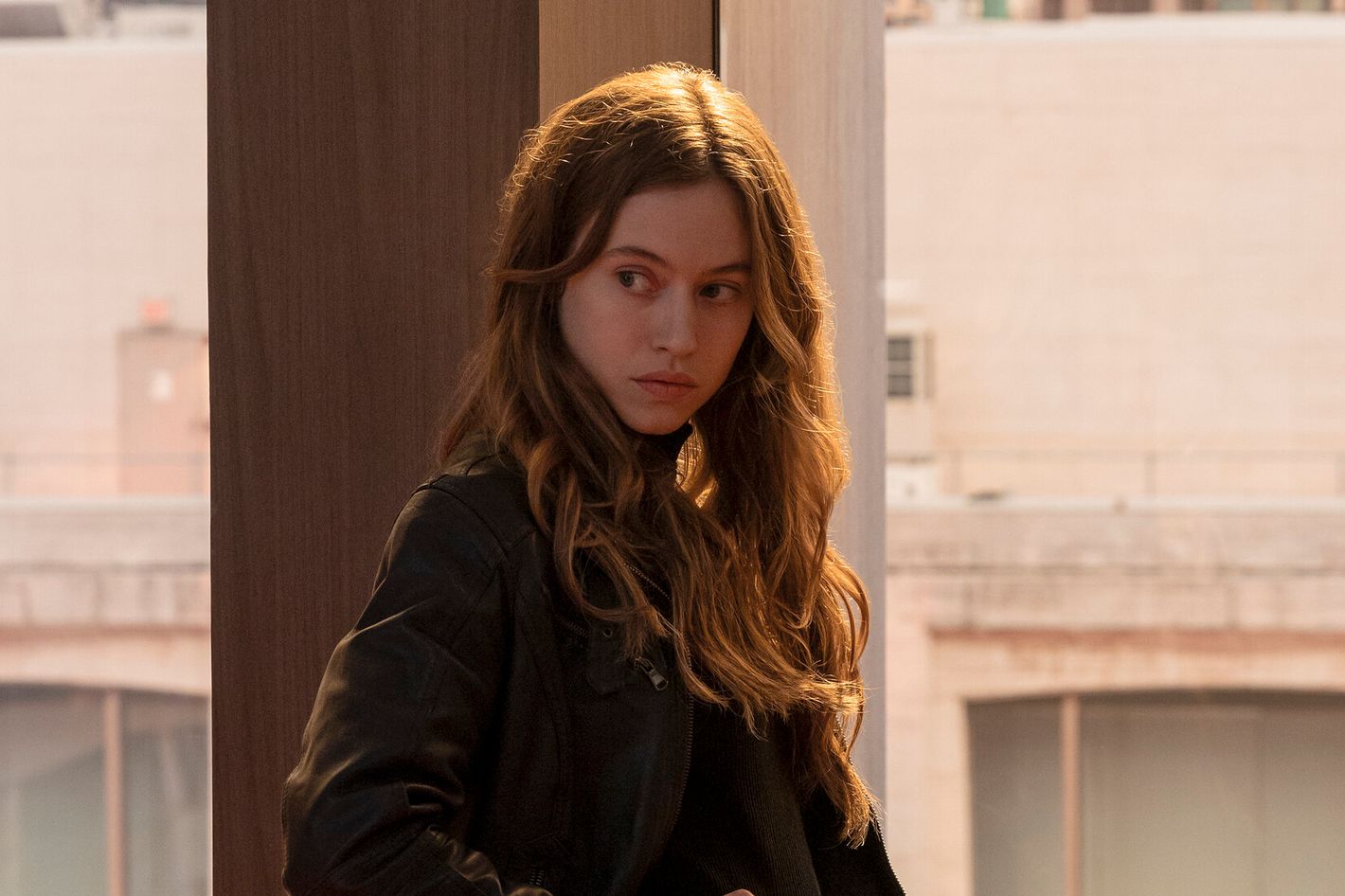
Cheyenne Toussaint enters Étoile — Amy Sherman-Palladino and Dan Palladino’s cross-cultural ode to ballet — in a flurry of waves and muck. Before the world-class Parisian ballerina played by Lou de Laâge is sent to live in New York as part of a trade to draw audiences and hopefully save dance, she’s at sea with ecowarriors, bellowing against fishermen operating illegally like a caricature of a Frenchwoman speaking English. When, ashore, she hears of the Ballet National’s plan to export her to the New York Metropolitan Ballet, she stomps darkly into the office of its director, Geneviève Lavigne (Charlotte Gainsbourg), whose grimaces in her presence reveal that Cheyenne doesn’t just look like death — she smells like it, too.
Throughout Étoile, Cheyenne is alternately repulsive and mesmerizing, her savage attitude starkly contrasted by the polish of her performances. Stalking Lincoln Center in a pair of combat boots, Cheyenne speaks her mind in a low growl, fires every male dance partner NYMB artistic director Jack McMillan (Luke Kirby) has to offer, and sleeps with her new collaborator on Jack’s couch. It’s a lot for one character to contain, and de Laâge, adapting to the Palladinos’ signature speed in a language foreign to her, makes Cheyenne impossible to look away from — especially when, late in the season, she slips while performing the “Dance of the Sugar Plum Fairy” and is struck by the realization that, maybe, she isn’t perfect after all.
Cheyenne Toussiant is stubborn, passionate, and brooding, yet extremely alive. I was fascinated by how little she feared displeasing others. What do you admire about the character?
She isn’t at all within normal society’s codes of seduction. She absolutely doesn’t care. Her goal is to be the best dancer possible and to be respected through her art and not through forms of politeness or false kindnesses. If you acted like Cheyenne all the time, you would have very few people around you — thankfully! — but I enjoyed being in that freedom and asking myself, Who are we if we remove the layers of politeness and smiles?
What was the casting process like?
The Palladinos didn’t know me, and I didn’t know how big they were until I was picked. I discovered they really had an audience. I went through casting without knowing how to speak English, then I got a callback. I was like, Well, they’re going to figure out that I don’t speak English and that’ll be the end of that. I find it can be difficult to learn something without a goal, but in this case, learning a language suddenly took on its full meaning.
Was there something about you not speaking English perfectly that worked for Amy and Dan?
Yes, because I knew from the beginning — and that’s why I went to the casting — that they were looking for an actress with a French accent. I wouldn’t have gone otherwise.
Whether in French or English, the language in a Palladino show moves at a particularly fast pace. How did you prepare for the role linguistically?
I worked with a dialogue coach. I very quickly realized that I needed someone with whom everything would be in English. Kate Wilson, who is a professor at Julliard, was as patient as an angel. Getting an adult to work in a language they don’t know — it’s a lot of repetition. I learned that after 2 years old, you stop hearing the frequencies you don’t need in your own language, so that limits you, because when you can’t hear a sound, it’s impossible to reproduce. The first step is to be able to hear again.
And yes, the Palladinos’ writing is very particular. Not only was it English; it also requires you to be extremely quick, to be almost a virtuoso with words. Sometimes I thought to myself, What does this expression even mean? One of my scene partners, David Alvarez, said, “You’re out of luck, because you’re the one who has the most complicated lines and speaks English the least well.” It’s just repetition until you eventually free yourself from the text. They asked us to go very fast and to be very excessive. Often, they wanted an interpretation that was almost theatrical.
Which scenes did you find the most difficult?
Even for simple phrases, I was afraid of not being understood in English because I wasn’t sure how to go that fast with an accent and be clear. In real life, I’m slower, so that required me to activate an engine inside of me. That’s what scared me: to think, Am I going to be able to spark that energy in another language and stay the course? All the scenes that I was most afraid of I had worked on so hard beforehand. For example, when I do the monologue where I tell the story of my mother killing someone, at first I couldn’t figure out how to say the word murderer clearly in English.
It’s not easy!
And she says it in every sentence! These really technical challenges scared me. Next to that, acting felt like a place of freedom and delight. When someone asked, “Are you afraid of this scene?” I said, “No, I’m afraid of the script. But now I want to act because that’s what’s going to allow me to overcome that.”
I was wondering if there was any improv in the story of the village.
Dan and Amy don’t want us to improvise, and you quickly understand why. Their text is like a musical score. When we try something different, it’s always less good because it doesn’t work as well in their universe.
Also because of the rhythm they were asking for, the speed, I almost felt like I was on a ski slope and losing control. I laughed with Luke at that. I was like, “Do you guys understand me? I feel like I’m speaking way too fast.” Luke had already worked with Amy and Dan so he already had a sense of the speed they were asking for. He was really a good model for me to go, “Okay, that’s how far they want us to go.”
How did you activate that energy you needed?
It’s like in a normal day; there are moments where you’re in sleep mode, but like now, for an interview, we both turn ourselves on to be responsive and bounce off what we’re saying. That’s what acting is. It’s like having a switch inside of you that you turn on — but you have to leave it on for hours and hours and hours. And then you sleep really well after.
It also requires you to be pretty serious generally. At first I was like, “I’m filming in New York; I’m going to have time to see so much!” But actually, no, you’re working. I needed a strict lifestyle.
In the first episode, there’s the scene where you dance alone in Paris that appears to be filmed all in one shot. And it looks like you! But I know you worked with a dance double, Constance Devernay-Laurence. Where are we seeing you and where are we seeing her?
It’s actually so mixed up that when I saw it, I was like, Wow, how did they do it? We really worked together. We each learned the choreographies — me in a much more simplistic way because there were moves I couldn’t do.
How did you prepare physically?
Sometimes I felt like I was prepping myself in my entirety — from the mouth to the body. Everything was like sports training. I danced a lot as a kid and a teen, but I had completely stopped because it wasn’t my passion. Ballet is so difficult and demanding that if you don’t train every day, you don’t progress and it becomes uninteresting. When I got the role, I regretted having stopped. I had to start all over again but years later and with a body that had aged and stiffened. I remembered all the work I’d done, moves that I had to completely relearn. I took private classes with former dancers with the Paris Opera and the Royal Ballet in London. Since the writers were striking in the United States, I had nine months to prepare instead of three.
Why did you quit originally?
I wanted to do theater. Dance was really my mother’s dream, and at some point, I had to choose.
It’s sort of the opposite in Cheyenne’s case. We learn at the end of the season that her mother wasn’t very invested in it.
That’s more in line with what I had with theater. When you’re a child, you can discover you’re passionate about something that doesn’t come from your parents. I’m almost lucky to have that, because it’s one of the only areas in my life where I’ve never had doubts.
Did that help you understand Cheyenne’s character?
It helped to have met very young girls who were really passionate about ballet, who dedicated themselves to dance completely. I saw very clearly what it was to be suddenly struck by a vocation and totally dive into it. There was a kind of strength that emanated from them that always impressed me. Cheyenne has that.
When the evil billionaire character, Crispin Shamblee, asks Cheyenne if she loves dance, she says, “No, but it’s who I am, so there’s no choice.” How did you think about her relationship to ballet?
Whether it’s with a human being or an art, there can be something violent in passionate relationships. Dance is what gives her life meaning; it’s what raised her; it’s what she loves the most. But at the same time, it requires such sacrifices and so much work and can be very physically painful. Sometimes there might be a desire to drop everything, but when you’ve devoted yourself that much to something, you don’t know how to do anything else. It’s at once her happiness and her cross to bear.
Cheyenne is almost at the age where you have to ask what you’re going to do and become after. It was interesting that the show raised that question.
Even though Cheyenne has her mommy issues, she visits her mother after she slips onstage. I thought those scenes shot in Paris made her more human and complex. How was playing Cheyenne in French different?
It’s funny because, at first, I was afraid of the English. But after having worked on Cheyenne in English so much, I was afraid of French, even though it’s my language. We shift depending on the language we’re speaking — our voice isn’t in exactly the same place, and the energy it requires isn’t the same. I wasn’t sure who she was in that language. In the scenes with her mother or with Susu, the little girl, we stop seeing Cheyenne as someone who is always in the middle of a fight, who’s struggling, who is aggressive. Suddenly she becomes a bit more fragile.
What was the schedule like, filming between New York and Paris?
Amy and Dan had only written the first four episodes when we all signed on to do the show, so it was strange to commit to something without knowing what was going to happen to our characters. We filmed the first four episodes in Paris, and they continued to write during that time. Then we went to New York to film those scenes for the whole season, and then we returned to Paris to finish the last four.
What ended up surprising you in Cheyenne’s story?
I had no idea whether she was going to be able to save herself. She was furious to go to New York and did not want to be there. Since Amy and Dan were writing while we were filming, we had time to wait and wonder what was going to happen. Jack’s proposal for Cheyenne to take over as artistic director surprised me because that could totally change her future.
And then at the end of the finale, Cheyenne is upset about not having gotten the artistic-director job and she appears to get back together with Jack. How did you approach playing Cheyenne at her most vulnerable?
It’s crazy because it was the last scene that I filmed in New York. We were all a little tired from three months of work and, at the same time, it was the moment when I had to let go. From the beginning, I had to hold on to something, to be in control. It was like suddenly putting her back into childhood. I didn’t want her to cry like a self-confident woman but almost like a little girl, who says, “I am nothing, and I will probably never be anything.”
Amy often has masters done first — we film the whole scene with a Steadicam without stopping. That’s how she finds the scene. There’s something grueling about her way of doing it because so many directors know where they’re going to cut and don’t run everything in its entirety. That’s why, with Amy, I felt more like I was doing theater. Going through the whole scene gave us time to understand all the emotion: how things snap at one moment and then pick back up and move.
Related
How the French actress found her ballet muscle memory, managed Cheyenne’s mommy issues, and learned English through speed-talking à la Palladino.

